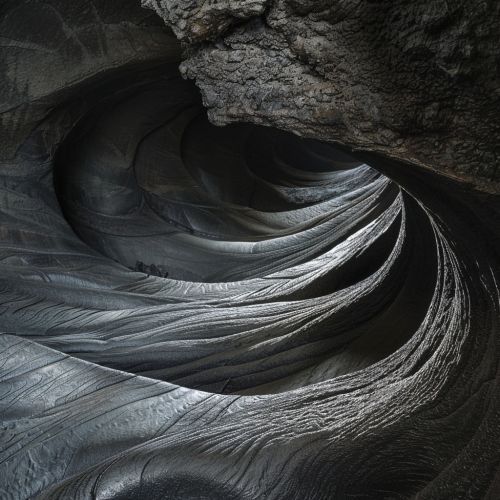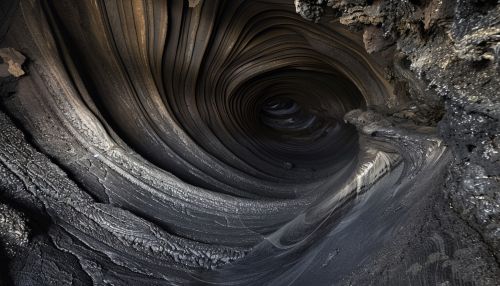Lava tubes
Introduction
A lava tube is a natural conduit formed by flowing lava which moves beneath the hardened surface of a lava flow. These tubes can drain lava from a volcano during an eruption, or can be extinct, meaning the lava flow has ceased, and the rock has cooled and left a long, cave-like channel.
Formation
Lava tubes are formed when an active low-viscosity lava flow develops a continuous and hard crust, which thickens and forms a roof above the still-flowing lava stream. Tubes form in one of two ways: by the crusting over of lava channels, and from pāhoehoe flows where the lava is moving under the surface.
Lava Channels
Lava usually leaves the point of eruption in channels. These channels tend to stay very hot as their surroundings cool. This means they slowly develop walls around them as the surrounding lava cools and/or as the channel melts its way deeper. These channels can become deep enough to crust over, forming an insulating tube that keeps the lava molten and serves as a conduit for the flowing lava.
Pāhoehoe Flows
These types of tube-forming lava are characterized by smooth, billowy, or ropy surfaces. The texture is due to the skin being formed by the cooling of the lava upon exposure to the air, while the mass of fluid lava continues to flow underneath. This skin insulates the flowing lava, allowing it to retain its heat and fluidity longer.
Characteristics
Lava tubes come in a variety of sizes and shapes, depending on the viscosity of the lava, the slope of the ground over which it travels, and the rate of gas loss. The interiors can be quite complex, with multiple passages and chambers. Some tubes are simple and straight, while others are complex and labyrinthine. The longest known lava tube is the Kazumura Cave in Hawaii, which is over 65.5 kilometers long.
Exploration and Use
Lava tubes are often used by speleologists for study and exploration. These tubes can contain a wealth of information about volcanic and geomorphic processes. They are also of interest to astrobiologists as they are thought to be analogs for potential lava tube systems on other planets and moons, particularly Mars and the Moon.
Hazards
While lava tubes can be fascinating to explore, they also pose significant hazards. The rock can be very sharp, and often unstable. It's also possible to encounter pockets of toxic gases. Additionally, the tubes can be difficult to navigate and easy to get lost in, especially the more complex systems.
Preservation and Tourism
Many lava tubes are located within protected lands, such as national parks or nature reserves. They are often popular tourist destinations, offering visitors a unique opportunity to walk through these natural geological formations. Examples include the lava tubes in Hawaii Volcanoes National Park, and the Undara Lava Tubes in Australia.


